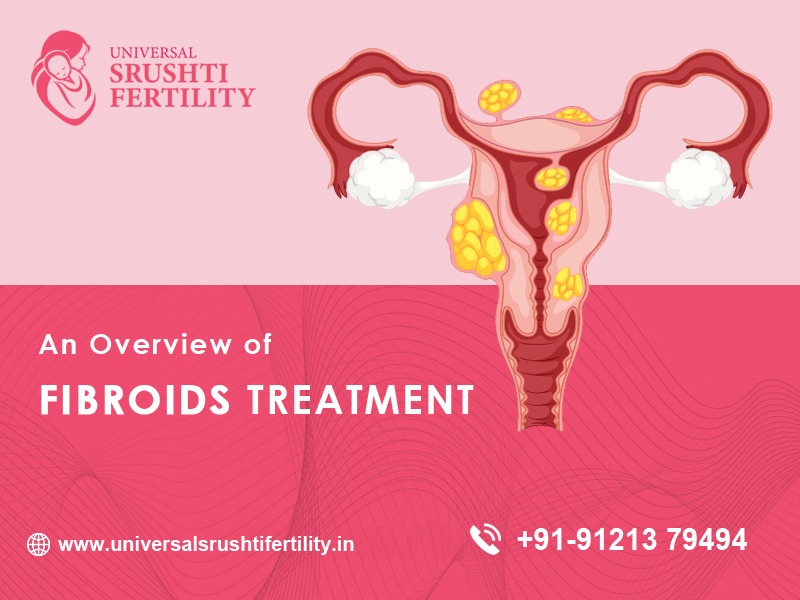Fibroids are defined as abnormal tissue growth (muscular tumours) on the uterus (womb) walls. It is also called leiomyomas or myomas. Mostly these tumours are non-cancerous. However, around 0.1% of fibroids might turn into cancerous tumours, which are very rare.
Some studies say that around 20% of women might develop this condition at some point in their lifetime. The size, shape, and location of fibroids vary from one woman to another. Sometimes they might grow in multiple locations varying in size and shape in the same woman. The fibroid ranges from the size of a peanut to a watermelon.
In many women, they don’t exhibit symptoms. However, in severe cases, women experience heavy menstrual bleeding, pain in the pelvic area, and frequent urination.
Diagnosis Of Fibroids
Mostly, the condition is diagnosed during the regular tests associated with your uterus, ovaries or vagina. If the fibroid is medium to large, doctors can sense them with hands during the pelvic test.
Doctors suggest some imaging tests if you experience any symptoms associated with uterine fibroids or for confirmation in other test cases. The tests include:
Transvaginal Ultrasound: This is a procedure where sound waves are used to diagnose the number, size, and shape of fibroids.
MRI – Magnetic Resonance Imaging: it helps to diagnose size, location and the type of tumours.
Hysterosonography: it helps diagnose submucosal fibroids and also gets a clear picture of the uterus lining.
Hysterosalpingography(HSG) or Sonohysterogram: These tests also help to determine submucosal fibroids.
In some cases, doctors might also perform laparoscopy or hysteroscopy, minimally invasive surgical procedures to confirm a woman has fibroids.
Endometrial Biopsy is a rare procedure but helps to rule out uterine sarcoma.
Treatment For Uterine Fibroids
Women with fibroids having no discomfort or symptoms might not require treatment. But with other complications, the condition requires prompt treatment.
Uterine fibroids require multiple treatment methods to manage them effectively. Fibroids treatment also varies from person to person depending on the following factors:
- Symptoms
- Size, location and type of the fibroids
- Age
- General health conditions
- The desire of having children in future
Medications
Usually, medication is suggested to manage the symptoms of fibroids. Over the counter medications like ibuprofen relieves pelvic pain. Some other medicines work on hormones to control your menstrual cycle. For example, iron supplements can control heavy menstrual bleeding and also prevents anaemia.
Medications might shrink fibroids but make them disappear.
Some other medications used in treating fibroids include:
- Gonadotropin-releasing hormone agonists (GnRHa) drugs like leuprolide, triptorelin are used to pause menstruation by blocking the production of estrogen and progesterone. As a result, the fibroids shrink.
- Non-hormonal medications of Tranexamic acid are given to ease heavy menstrual periods.
- Progestin-releasing Intrauterine Device(IUD) placed into the uterus to control heavy bleeding caused by fibroids by releasing progesterone-like medication.
- RU-486 (mifepristone) is an antihormonal drug given to shrink the fibroids to half. It also relieves pelvic pain and bladder pressure.
- EllaOne drug is an emergency contraception drug used to shrink fibroids and prevent bleeding.
Many types of medications available to treat fibroids. But never take medicines without consulting a doctor.
Surgical Treatment For Uterine Fibroids
When medication doesn’t improve symptoms or worsening the condition, surgery is the next recommended option.
Minimally Invasive Procedures
Fibroids can be destroyed with the help of minimally invasive procedures without open surgery.
Uterine Artery Embolization(UAE): The procedure involves injecting embolic agents into the arteries; they are small particles that cut down the blood supply to the fibroids and make them shrink.
Cryomyolysis & Myolysis: These are laparoscopic procedures in which an electric current or laser is used to freeze the fibroids.
Hysteroscopic Myomectomy: This procedure helps to remove submucosal fibroids deep inside the uterus.
Laparoscopic Myomectomy: In this procedure, fibroids are removed with the help of laparoscopy.
Endometrial Ablation: This procedure dissolves the lining of the uterus with the help of heat or microwave energy. The procedure helps to control the heavy menstrual bleeding caused by fibroids.
Traditional Surgical Procedures To Remove Fibroids
Hysterectomy: This is a permanent treatment for uterine fibroids, especially in the case of large fibroids.
Abdominal Myomectomy: It is the best treatment to remove multiple fibroids, large fibroids and deep fibroids.
At Srushti Fertility, we have experienced doctors treating complex fibroids without affecting fertility. For more information, please consult with our expert fertility doctors.


